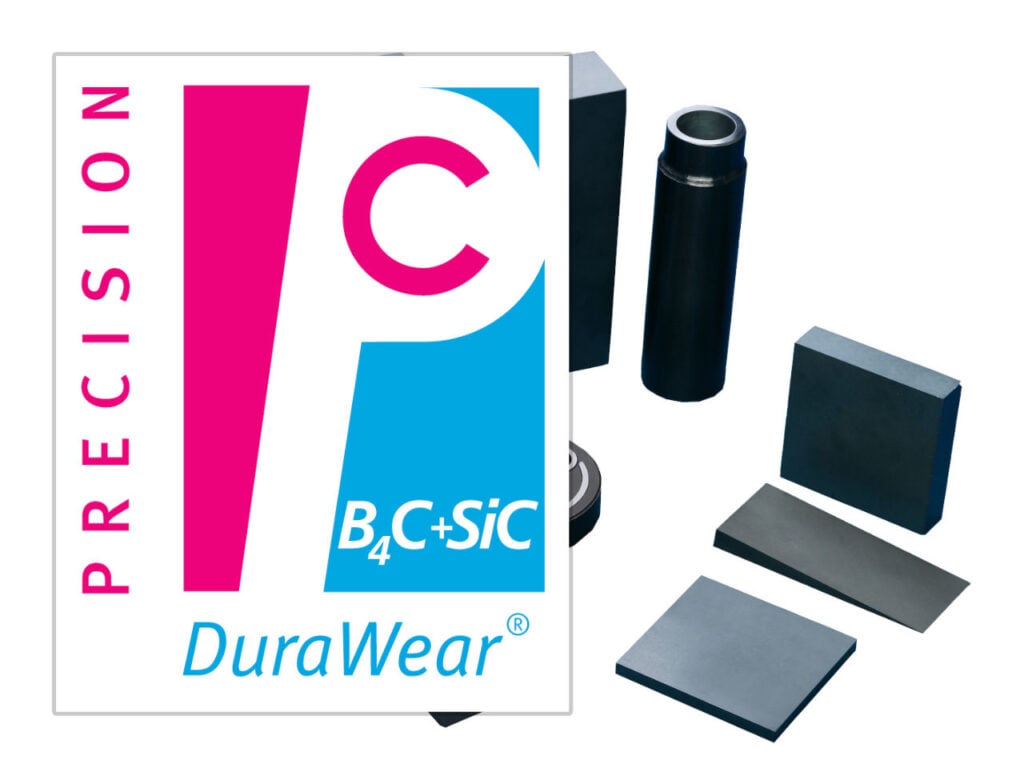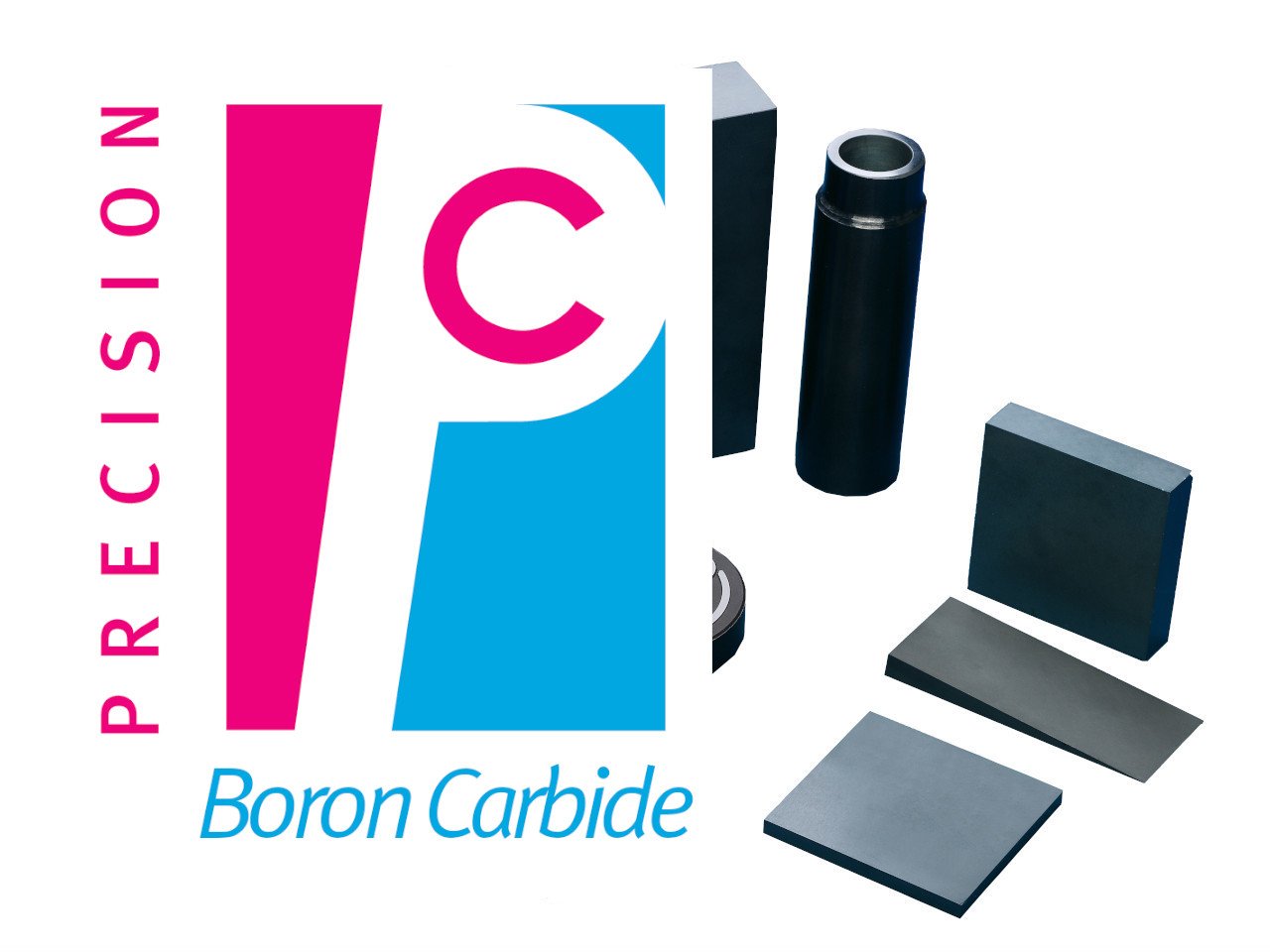Boron Carbide (B4C)
Advantages
- High hardness
- Low density
- High melting point
- High elastic modulus
- Chemical inertness
- High neutron absorption cross-section
- Excellent thermoelectric properties
Material Properties
| Property | Unit | Boron Carbide (B4C) | DuraWear (B4C+SiC) | DuraShock (SiC+B4C) |
|---|---|---|---|---|
| Density | g/cm3 | 2.52 | 2.62 | 2.8 |
| Hardness | GPa | 33 | 31 | 28 |
| Fracture Toughness KIc 1 | MPa m2 | 2.5 | 3.4 | 4 |
| Compressive Strength | MPa | 3000 | 2900 | 2500 |
| Flexural Strength @ 25°C | MPa | 420 | 340 | 330 |
1 KIc Toughness as measured by the indentation method.
Disclaimer: The values presented are mean and typical of those resulted from test samples. They are provided as an indication only to serve as guidance in the design of ceramic components and are not guaranteed in any way. The actual values can vary according to the shape and size of the envisioned component.
Datasheets

Boron Carbide / Silicon Carbide Composite
DuraShock

Boron Carbide / Silicon Carbide Composite
DuraWear
Boron Carbide Machining
Boron Carbide can be machined in green, biscuit, or fully dense states. While in the green or biscuit form it can be machined relatively easily into complex geometries. However, the sintering process that is required to fully densify the material causes the Boron Carbide body to shrink approximately 20%. This shrinkage means that it is impossible to hold very tight tolerances when machining Boron Carbide pre-sintering. In order to achieve very tight tolerances, fully sintered material must be machined/ground with diamond tools. In this process a very precise diamond coated tool/wheel is used to abrade away the material until the desired form is created. Due to the inherit hardness of the material, this can be a time consuming and costly process.
Frequently Asked Questions
-
What is Boron Carbide used for?
The combination of low specific weight, high hardness and reasonable toughness makes it a suitable material for body and vehicle armor. Boron carbide is also extensively used as control rods, shielding materials and as neutron detectors in nuclear reactors due to its ability to absorb neutrons without forming long lived radionuclide. As it is a p-type semiconductor, boron carbide can be a suitable candidate material for electronic devices that can be operated at high temperatures. Boron Carbide is also an excellent p-type thermoelectric material. Some typical applications of boron carbide include:
- Sand blasting nozzles
- Ball & roller bearings
- Seals
- Wire drawing dies
- Body armour


